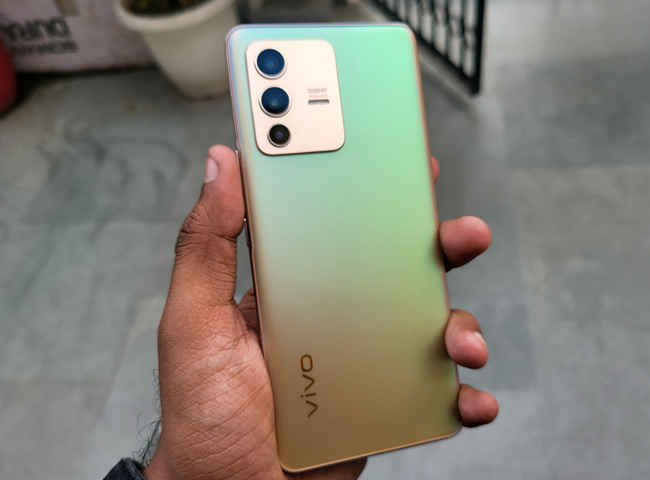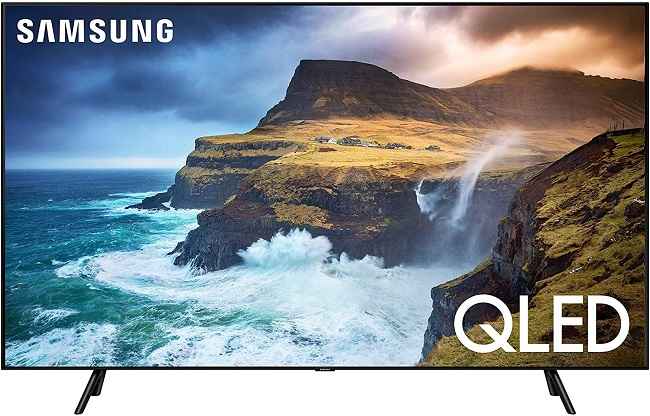The Apple AirPods 3 are, no doubt, a big step up in terms of performance, features and build from their predecessors. Priced at Rs 18,500, they offer a wide array of enticing features, especially for Apple users, including Spatial Audio with dynamic head tracking, hands-free Siri, IPX4 rating, Audio Sharing, and more. The earphones miss out on Active Noise Cancellation, so if that is something you'd like your earphones to have, there are numerous options on the market in the same price range that do offer ANC.
Apple is often credited as the company that ushered in the era of truly wireless earphones, and for good reason. The original Apple AirPods, launched in 2016, exploded a segment in its infancy to massive levels of popularity. Since then, audio companies have been coming out with their own iterations of truly wireless earphones in several price brackets. Nevertheless, the AirPods lineup continues to be one of the most ubiquitous, if not the most, across the globe. In October this year, Apple launched the third generation of its AirPods lineup - the Apple AirPods 3 complete with an upgraded design, Spatial Audio support, wireless charging compatibility, and a host of other features. Priced at Rs 18,500, the earphones compete against the likes of the Sony WF-1000XM3, Jabra Elite 7 Pro, and a few others. But are the 3rd-Gen AirPods worth their price tag or are there better options in the market? We're going to find out that and more in this review.
Apple AirPods 3: Performance – Sound quality, Spatial Audio, Microphone and Wireless Connectivity
Equipped with custom-made, low distortion drivers and high-dynamic range amplifiers, the Apple AirPods 3 is packing spanking new tech compared to its predecessor - the AirPods 2nd Gen. The earphones also come with the Apple H1 chip that was previously present on the AirPods Pro and AirPods 2. Due to the improved hardware, the earphones are a definite step up from their predecessors - the AirPods 2 - when it comes to sound quality.
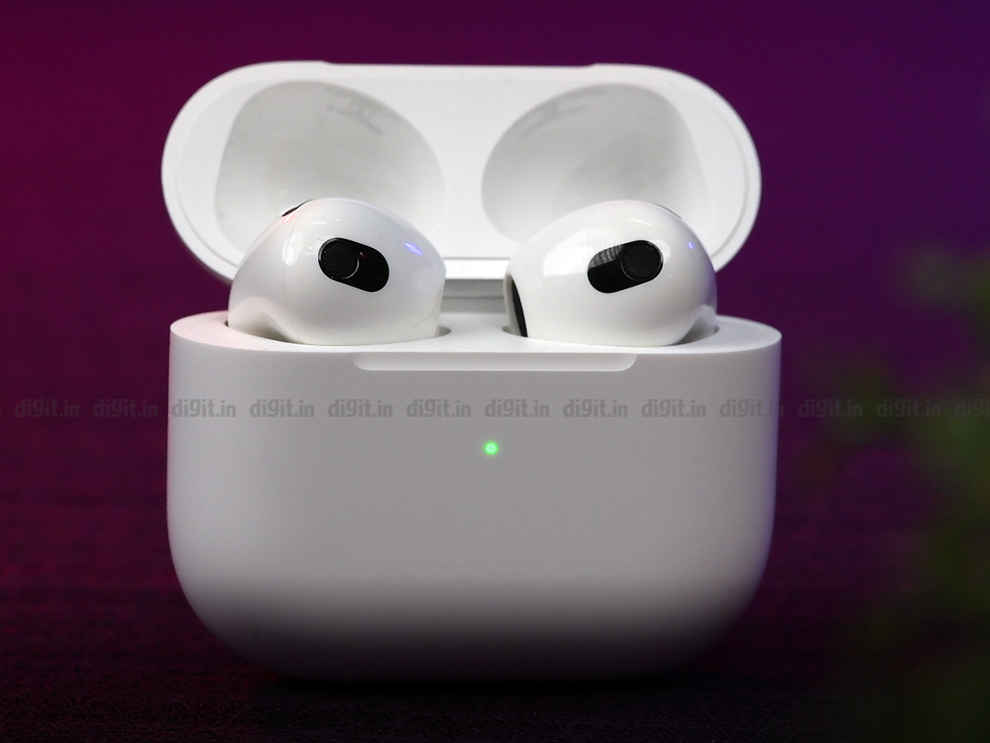
Not just that, the earphones also boast of a feature dubbed Adaptive EQ that uses computational audio and an inward-facing microphone to adjust sound playback in real-time to compensate for losses in the mids and highs due to an inadequate fit. Another trick the AirPods 3 has up its sleeves is Spatial Audio that has previously been seen on the AirPods Pro. Spatial audio technology takes 5.1, 7.1 and Dolby Atmos content and applies audio filters to it to place the sound in a 3D soundscape making it feel more like it’s coming from around you. This is coupled with dynamic head tracking to make you feel like you're always in the centre of tracks and scenes. So, what do all of these new features and hardware translate to? Pretty impressive performance, for the most part.
Let's start with the sound quality. The AirPods 3 has a bright sound profile with recessed bass notes and pronounced mids and highs. The earbuds are semi-open, so due to this design, they do struggle to form a seal that can effectively produce the punch and rumble of low bass. So, you may find the earbuds a bit lacking when it comes to that front and may find that the bass response isn't as hard-hitting as one would expect. The rest of the frequency range, however, is well-balanced and detailed. The mids are present and clear so vocals and lead instruments sound quite pristine in the mix and the highs are also well-produced with ample detail.
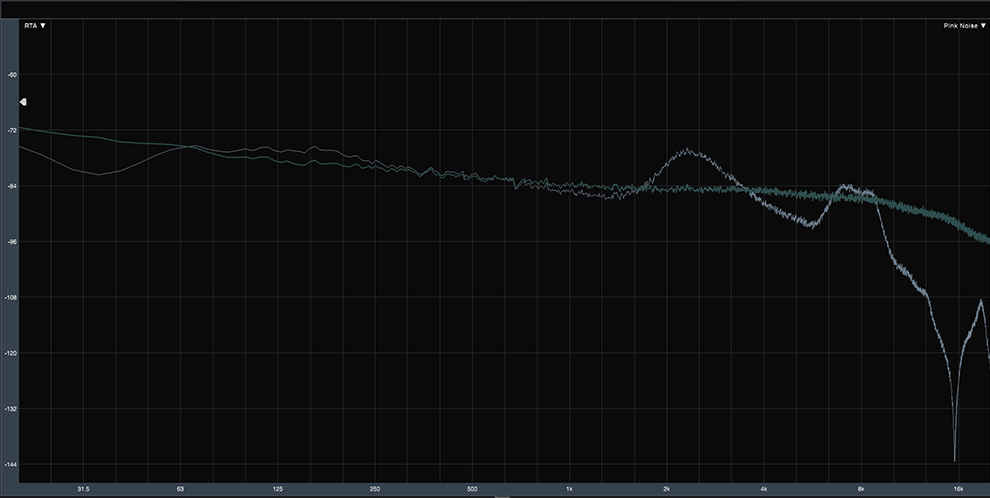
Uncompensated frequency response graph of AirPods 3 (Gray) vs Flat response (Dark Green)
The sound signature of the AirPods 3 is especially good for podcasts, audiobooks, and even films and TV shows. Although, if you're watching an action-packed one, you may miss some of the rumble and roar in those sequences. Unfortunately, there are no EQ customisations features, so you're pretty much stuck with what you get on both Apple and Android devices.
The earphones, however, have excellent imaging performance with accurate placement of voices and instruments within the stage. The soundstage is also pretty good for TWS earphones, primarily due to the design. Do note that Adaptive EQ remains turned on constantly and there's no way to turn it off, so we couldn't test the earphones without the feature activated.
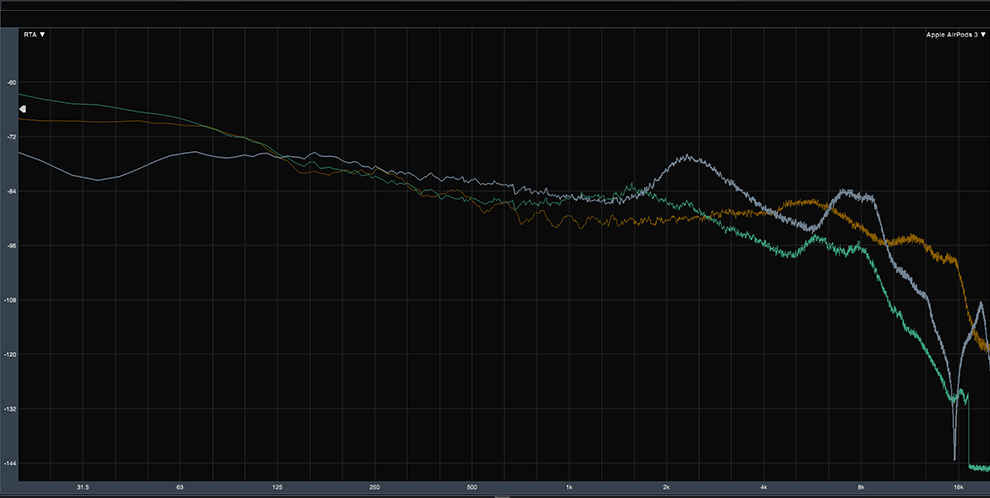
Uncompensated frequency response graph of AirPods 3 (Gray) vs Sony WF-1000XM3 (Orange) vs Jabra Elite 85t (Green)
Now, moving on to Spatial Audio, the technology is accessible not just on Apple phones but also Android smartphones as long as your phone supports Dolby Atmos and you use a source capable of playing Spatial Audio music such as Apple Music. The effect produced is pretty impressive. The positioning of the vocals and instruments in the 3-dimensional space make tracks come alive and make you feel like you're in a room listening to the band play around you.
Each instrument has its own space to shine and the AirPods 3 convey the sense of space convincingly. The whole experience is very enjoyable and coupled with pretty accurate head tracking, the immersiveness just goes up a couple of notches in comparison to regular stereo sound. As for codec support, the earbuds support SBC and AAC codecs, so they can't really handle hi-res audio which is a bit disappointing since Apple Music does offer lossless audio.
Onto the microphone performance, the AirPods 3 are equipped with dual beamforming microphones that do a great job at capturing the speaker's voice while reducing environmental sounds such as wind. In our tests, the microphone recorded clear sound with minimal distortions.
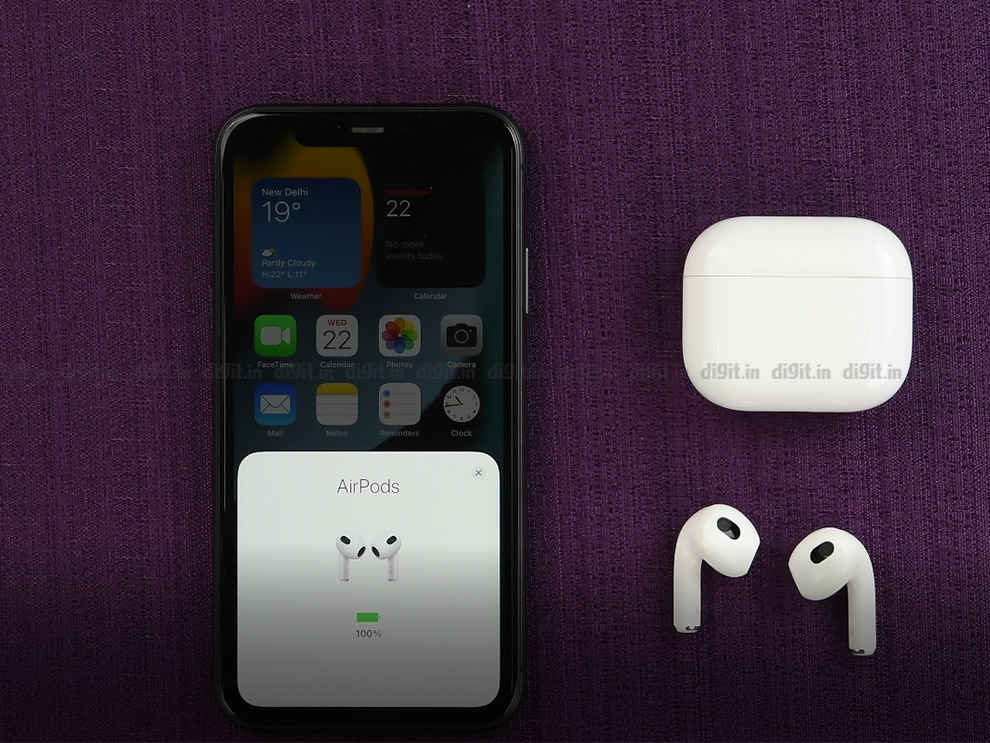
As for connectivity, the AirPods 3 are, of course, optimised to work most seamlessly with Apple devices. The buds have a one-touch setup that auto pairs them to Apple devices instantaneously. There were absolutely no connection drops or stutters during our 2-week testing window.
Apple AirPods 3: Features
Priced at Rs 18,500, the AirPods 3 are definitely on the higher-end of truly wireless earphones even though they are the company's latest entry-level option. So, at this price, they compete against industry heavyweights such as the Sony WF-1000XM3. Most TWS earphones in this price range sport Active Noise Cancellation, but you won't find that feature on these buds since they're the lower-priced TWS offering from the company and the ANC feature is reserved for the higher-end Pro variant.
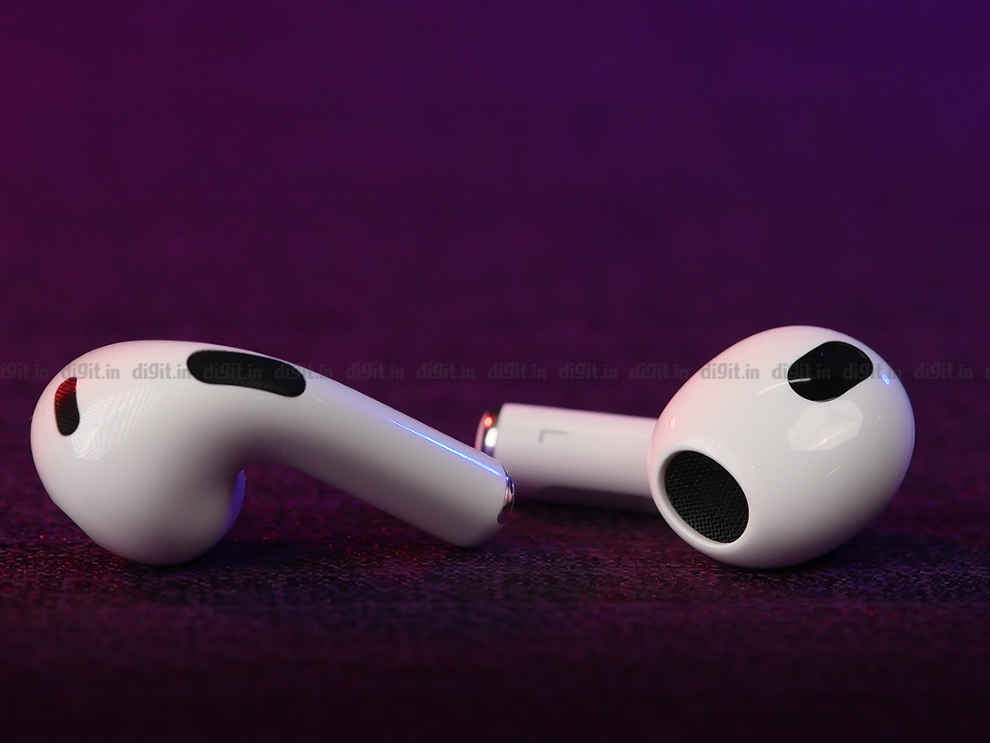
However, the fact that these earphones do not have ear tips to seal the fit does mean that ANC is a feature that is sorely missed mainly due to the lacking passive isolation. If you're in a noisy environment, ambient sounds will definitely make their way through probably prompting most of you to increase the volume levels as we did, which isn't exactly the best for your ears. There's a degree of sound leakage as well due to the semi-open design of the AirPods 3.
The lacking Active Noise Cancellation feature aside, the AirPods 3 do come with an array of features, some of which we did cover in the performance section, namely Adaptive EQ and Spatial Audio with dynamic head tracking. Aside from these, the earphones and the charging case are also rated IPX4, so they are resistant to light splashes of water, making them safe to use during workouts and light rain. However, the fit is another topic altogether when working out, but we'll come to that later, so stick around. The case can be wirelessly charged on a Magsafe charger or any Qi-enabled wireless charger.

Next, the buds come equipped with a new skin-detect sensor that automatically pauses the music when an earbud leaves your ear and resumes it when it's back in. You also get force-sensitive capacitive controls that allow you to register music controls by squeezing the stem. This feature worked supremely well in our testing and we prefer force-enabled controls far more than traditional touch controls that are often marred by mistaps. There are, however, no volume controls, which is disappointing.
Nevertheless, you can ask Siri to lower the volume on Apple devices handsfree by simply saying Hey Siri. The earphones come with handsfree Siri, exclusive to Apple devices, of course, so you can simply say Hey Siri to make a call, play music, get directions and more. Apple users can also have Siri read out all their notifications through their AirPods 3, which is convenient.
There are also a bunch of other Apple-exclusive features such as Spatial Audio with head tracking in Group FaceTime calls, Audio Sharing with other AirPods so you and your friend can listen to the same song or show simultaneously on any sets of AirPods, Fast Pairing, and Apple's Find My network integration. These extra features set these earphones apart from the competition and if you're using an Android phone, you will miss out on these features, so keep that in mind.
Apple AirPods 3: Battery life
The 3rd Gen AirPods come with improved battery life rated at 6 hours on the buds alone, and a total of 30 hours with the charging case. In comparison, the AirPods 2 offered up to 24 hours of total wireless playback time and 5 hours from the earbuds alone. However, with Spatial Audio enabled, you really end up with the same or slightly worse battery life as compared to the Gen2 AirPods. In our tests, the earphones lasted 4 hours and 20 minutes with Spatial Audio active at all times. The case provided about 4 additional charges to the earbuds.
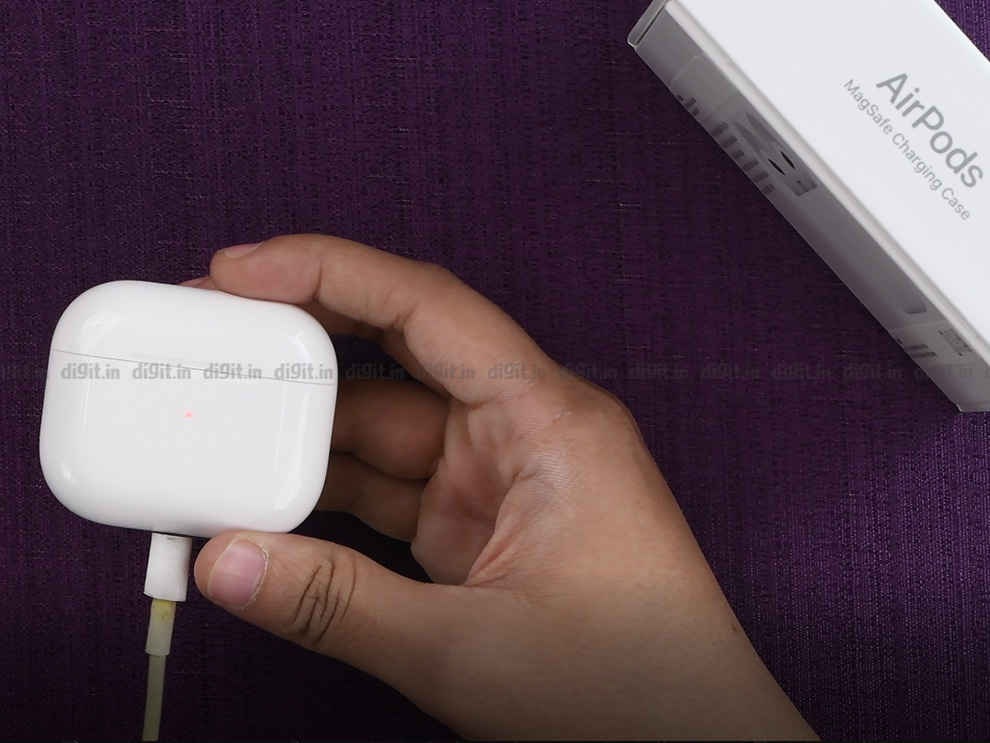
Since most users would use the earphones with Spatial Audio enabled since it is a pivotal feature in getting the full AirPods 3 experience, we would say this number is a better indicator of battery life. So, the battery life, when compared to competitors such as the Sony WF-1000XM3 with 6 hours of playback with ANC on and the Jabra Elite 85t with 5.5 hours of playback with ANC on is pretty ordinary. Nevertheless, the AirPods 3's battery life is good enough that it should easily get you through about 5-7 days' worth of usage.
You also get wireless charging via Magsafe or any Qi wireless chargers. Additionally, the earphones come with quick charge, where a 5-minute charging session will net you an hour's worth of playback. All in all, the AirPods 3 come with good battery life but with Spatial Audio enabled it is about the same as the previous-gen model.
Apple AirPods 3: Build, design and comfort

The AirPods 3 continue the design language popularised by the original AirPods with some key changes. These are all-white, minimalist earphones with protruding curved stems. They offer a new contoured design that allows for better fit and comfort as compared to its predecessor. The stem is also 33 per cent shorter than the AirPods 2's stem, which makes them more compact and inconspicuous. The shorter stem, contoured earbuds and brushed aluminium accents also give these new AirPods a more streamlined look.
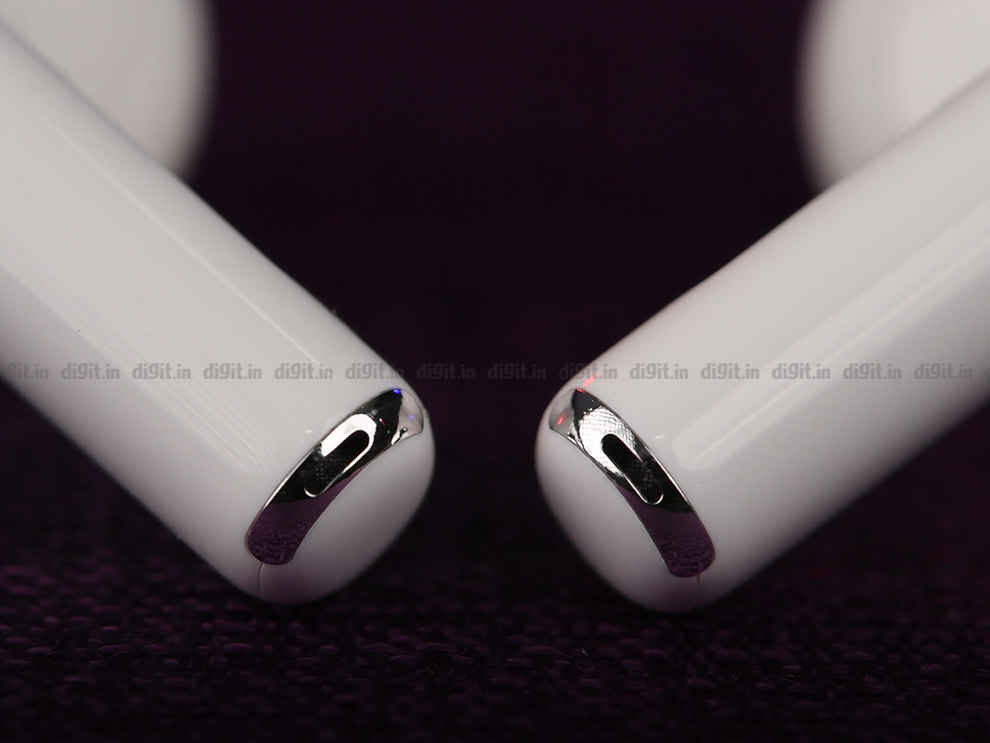
The force-sensitive capacitive sensors are housed at the bottom of the stem and they work exceptionally well. They also provide some audio feedback when pressed that lets you know the control has registered. The earphones are also pretty lightweight and the case is pretty pocketable. The case is slightly bigger than the AirPods 2's charging case but not by too much. It feels pretty robust like it can take a drop or two with ease. The case has a battery indicator light on the front and a Lightning port for charging.
As for fit and comfort, this is where the AirPods 3 can be a bit polarising. Unlike the AirPods Pro, you don't get ear tips on these buds and they have a semi-open design like the AirPods Gen2. While this will appeal to those who don't like the earbuds pushing too deep into the ear canals, the fit does feel less secure especially when working out or jogging.
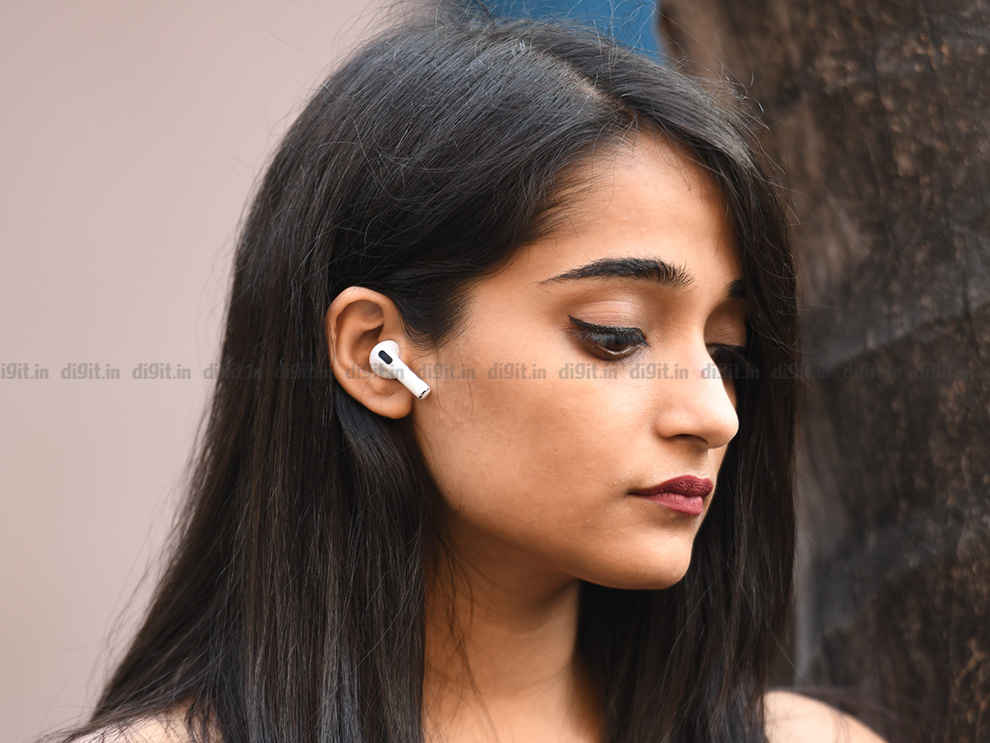
Also, if you have smaller ear canals, you may find the fit even less secure since the housings are pretty broad themselves so they may not nestle in your ears as securely. Nevertheless, the earbuds are lightweight at only 4.28g each so they are comfortable to wear over long periods of time. We urge you to visit a store and try out these earbuds before buying them to get an idea of the fit and if it works for you since all ears are shaped differently.
Apple AirPods 3: Verdict
The Apple AirPods 3 are, no doubt, a big step up in terms of performance, features and build from their predecessors. Priced at Rs 18,500, they offer a wide array of enticing features, especially for Apple users, including Spatial Audio with dynamic head tracking, hands-free Siri, IPX4 rating, Audio Sharing, and more. The earphones miss out on Active Noise Cancellation, so if that is something you'd like your earphones to have, there are numerous options on the market in the same price range that do offer ANC.
However, if ANC isn't a concern for you, the AirPods 3 make a pretty strong case for themselves with decent sound quality, immersive Spatial Audio support, good battery life, and more. Moreover, if you're an Apple user, you will get access to even more quality of life features. So, if you're looking for solid Apple ecosystem support without having to shell out 7500 rupees more for the AirPods Pro while still having access to Spatial Audio, these earphones are your best bet.
from Audio Video Reviews https://ift.tt/3HeavJd

